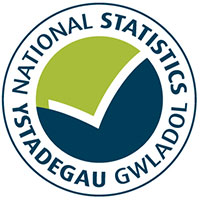For the period ending March 2022, data on children, working age people and pensioners in material deprivation and low income in Wales.
This is not the latest release in the series: Material deprivation and low income
Material deprivation is a measure of living standards. We define a person to be living in material deprivation if he or she is not able to access a certain number of goods and services.
Department for Work and Pensions (DWP) use the Family Resources Survey to publish statistics about children, working-age people and pensioners in material deprivation in their Households Below Average Income report (DWP), broken down for UK countries and regions of England.
Main findings
13% of children living in Wales between financial year ending (FYE) 2020 and FYE 2022 were in material deprivation and low income households. Low income households are those that had a total household income below 70% of the UK average household income, before housing costs were paid. The corresponding rate for England is 12% while that for Scotland is 10% and for Northern Ireland 8%.
11% of working-age adults living in Wales between FYE 2020 and FYE 2022 were in material deprivation and low income households. This is the same rate as that for Scotland. The corresponding rates are lower for England (9%) and for Northern Ireland (7%).
7% of pensioners living in Wales between FYE 2020 and FYE 2022 were in material deprivation (income is not considered for pensioners). The corresponding rates are lower at 6% for England, 5% for Northern Ireland, and 4% for Scotland.
Quality information
Last year we did not publish new data on material deprivation and low income due to data quality issues with the financial year ending (FYE) 2021 survey data, as described in the article Measures of poverty: April 2020 to March 2021. This year we have assessed the FYE 2022 data quality to be robust and are publishing the usual data on children and pensioners, as well as new data on combined low income and material deprivation for working-age people.
The two new data points being published span the FYE 2021 period but do not include the FYE 2021 survey data in calculations, as it is judged to be of low quality due to the impact of the coronavirus (COVID-19) pandemic on survey response rates. For the two new data points, estimates formerly calculated as 3 year rolling averages are based on 2 year rolling averages that omit the FYE 2021 survey data.
For FYE 2022, although the impact on survey responses was less marked than the previous year, restrictions remained in place throughout the first quarter of the survey year, before being gradually removed. This meant that it may not have been possible for those sampled to access several social opportunities or services (such as going on holiday or getting a haircut) during FYE 2022, regardless of deprivation or financial constraint. Some of those in the sample may have responded to these questions with their ordinary circumstances in mind. Others may have responded according to their actual (lockdown affected) circumstances.
This means that for FYE 2022, estimates of material deprivation are not strictly comparable with the pre-pandemic period. To help users interpret the data more information on data quality in FYE 2022 can be found in DWP’s Technical Report.
Data
Datasets and interactive tools
Material deprivation for children, working-age adults and pensioners, before housing costs, Wales, three year financial year averages, Financial Year Ending (FYE) 2007 to FYE 2022 , file type: ODS, file size: 10 KB
Contact
Nia Jones
Email: stats.inclusion@gov.wales
Rydym yn croesawu gohebiaeth yn Gymraeg / We welcome correspondence in Welsh.

